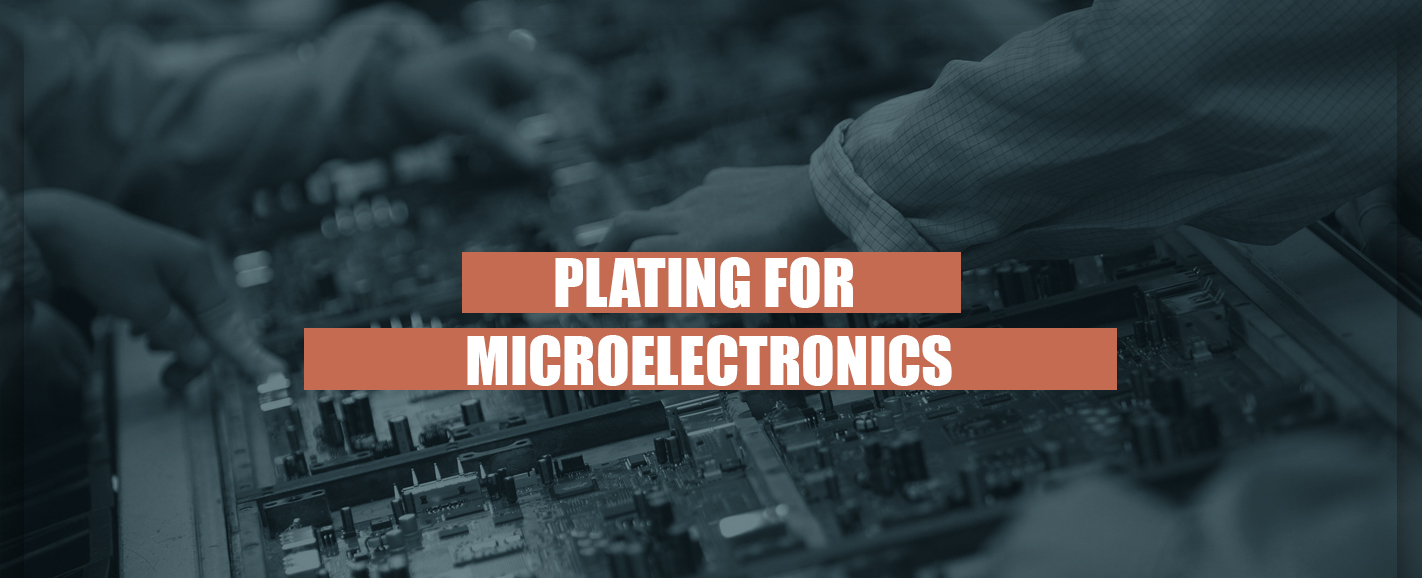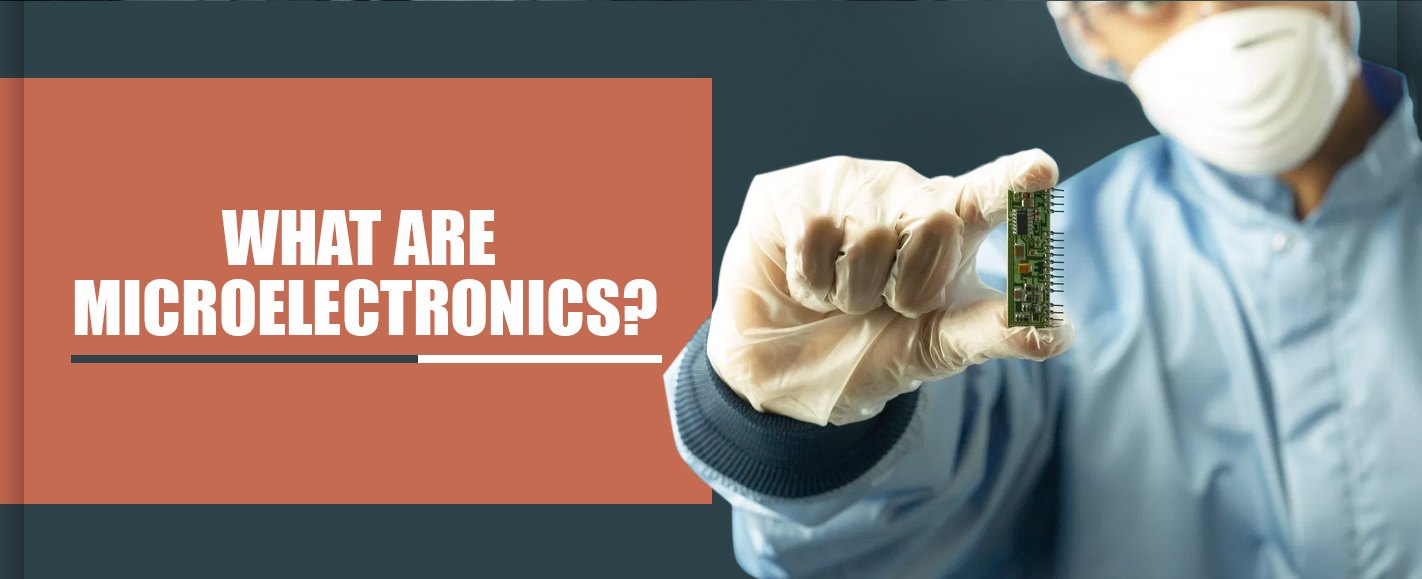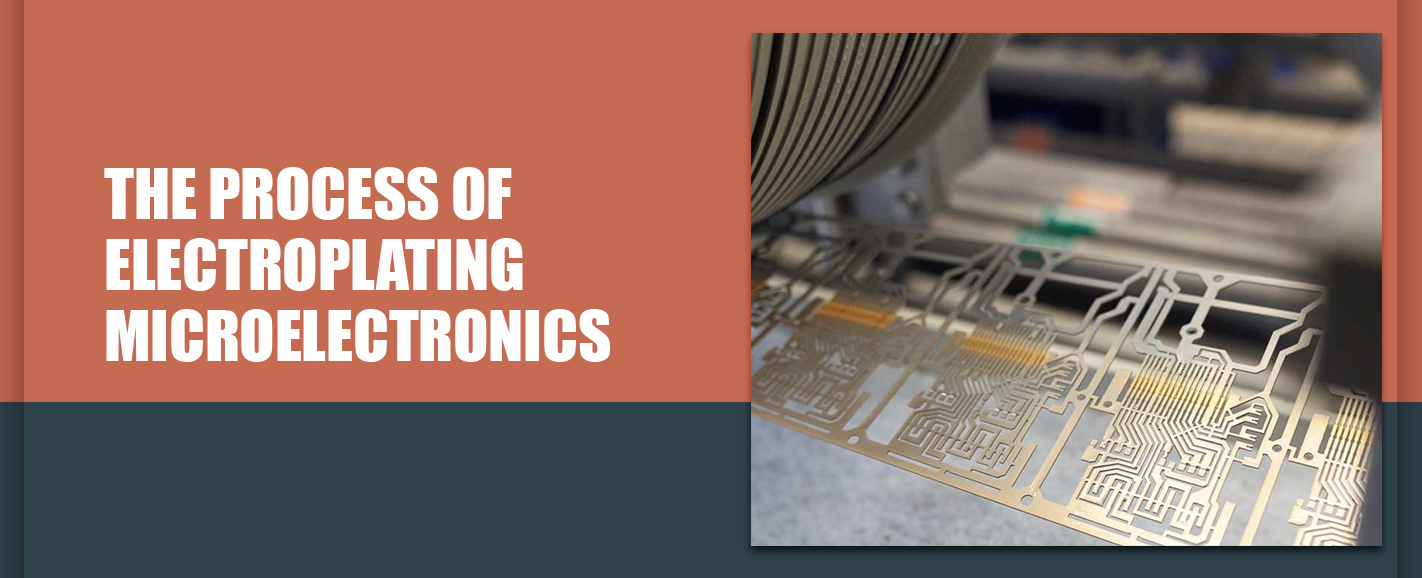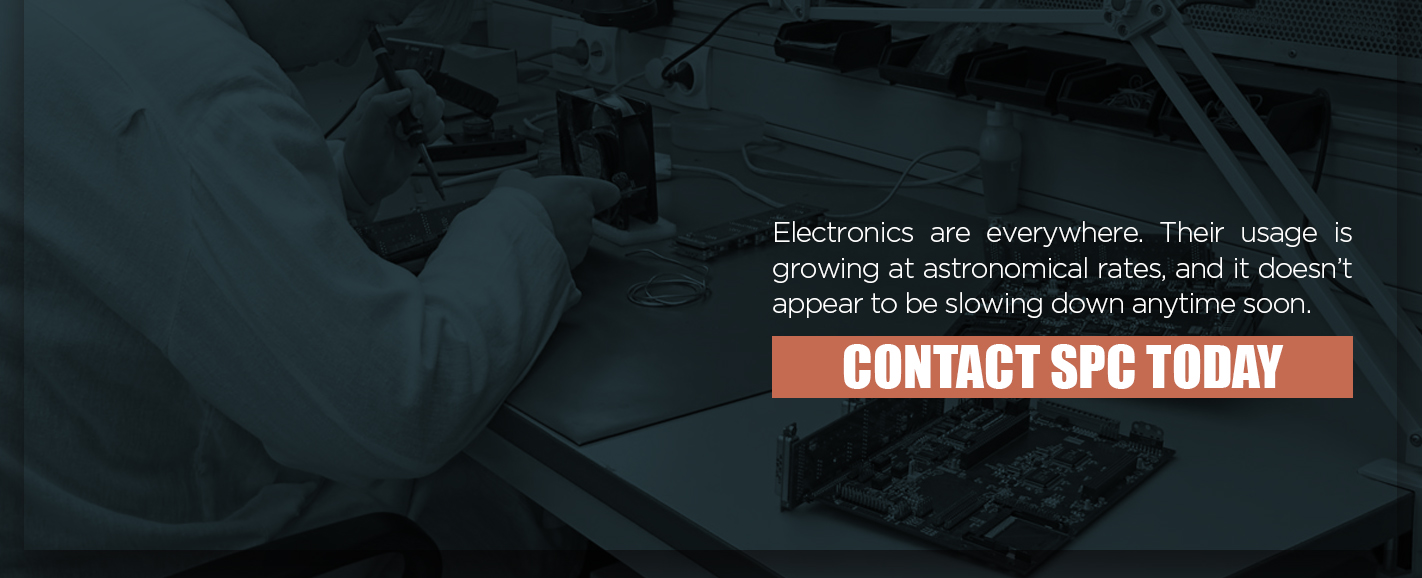If we were to trace the history of electronics, from the very beginning when computers took up entire rooms, to the present when incredible amounts of processing power and data storage are packed into a device fits into the palm of your hand, what conclusions might we draw?
We might say that electronics are getting more powerful, which is true. We might say that they’re becoming faster, smarter and more efficient, all of which are also true. But the aspect we want to draw attention to today is the fact that they’re becoming smaller and smaller with almost every generation. How is this possible? It has to do with microelectronics and a process known as electroplating.
What Are Microelectronics?
While microelectronics might sound like something far outside of the realm of daily life, the reality is that they surround us, all day and every day. If you’ve used a laptop, cell phone, TV, microwave, stereo, calculator, or smartphone, then you’ve interacted with microelectronics. They’re also common in the medical, military and aerospace industries.
As you might guess from the name, microelectronics are a subdivision of the broader electronics field. These specialized types of electronics are extremely small, often on a micrometer scale or even more minute. In many cases, these electronics take the same form as their larger counterparts. They may form transistors, inductors, insulators, conductors and more, and these components will work in the same way as they ordinarily would — just on a much smaller scale.
These microelectronics are also similar to their full-size counterparts in that they’re made from the same materials. These materials will typically fall into the category of a semiconductor, a material that has a conductivity property somewhere between that of a metal such as gold and that of an insulator such as glass. Graphite is one example of such a material, and silicon is another. Both are commonly used to make these tiny electronic components.
Increasingly, these microelectronics are capable of being produced in smaller and smaller sizes, as the technology needed to create them continues to improve. This is critical because the demand for tinier, faster and more compact electronics is ever-expanding. Even if you know nothing about the electronics industry, this is plain to see in everyday life. Electronics keep getting smaller and more efficient. For this to happen, the electronic components themselves have to continue getting smaller.
Because microelectronics are more difficult to manufacture than ordinary-sized electronics, and the knowledge and experience required to make them is rarer, microelectronics are also typically more expensive to produce than larger components. This means that manufacturers are constantly searching for ways to make this process more efficient and inexpensive.
Why Is Electroplating Useful?
With the demand for compact electronics steadily rising, manufacturers are always trying to improve them, making them both easier to produce, longer-lasting and more inexpensive. Just one of the means of doing this is through the use of electroplating.
Electroplating is the process of coating a microelectronic component with a layer of plating. This plating acts as a protective layer, decreasing the risk of and exposure to corrosion, and leading to greater microelectronics reliability, durability and functionality. In other words, electroplating typically does not always change the function of a microelectronic component, nor does it create a new component altogether. Instead, its purpose is to increase the lifespan of the tiny pieces, enabling them to craft longer-lasting and high-performing technology.
While this is the primary purpose of electroplating, other benefits can result from this practice. A few of the benefits worth mentioning include:
- Greater protection: We mentioned the corrosion protection that electroplating offers, but this isn’t the only thing that electronics need protection from. Electroplating also provides a line of defense against excessive moisture and any damaging chemicals that might harm the delicate electronics.
- Special surface properties: Depending on the components being plated, and the material used to do the plating, unique surface properties may result from the process.
Common Applications of Electroplating for Microelectronics
Electroplating can be done on a variety of different microelectronics, and the methods will vary slightly depending on the object being plated. A few examples of components which can receive this electroplating treatment include:
- Fineline circuit on a PC board: The tiny elements on a PC board are prime candidates for the protection offered by electroplating. Gold will often be used for this type of plating.
- Micro-circuits: The miniature circuits themselves in microelectronics will often be electroplated with nickel, palladium or gold.
- LTCC substrates: These low-temperature fired ceramic-based microelectronics are often plated with gold.
- Micro spot-plating for micro-connectors: This is a situation where the entire piece does not need to be plated. Rather, only one small portion of it needs to be spot-plated, for protection, functionality or appearance. This is often a cost-effective option, as it reduces the use of material required for the plating.
These four examples are far from the only instances of electroplating for microelectronics. However, they do make up a large percentage of the electroplating jobs being done today and are thus worth considering.
The Plating Metals
Which metals can be used for electroplating? Many different metals can be used, rather than one single metal that is used across the board. In most cases, the decision to use one metal over another has a lot to do with the purpose of the plating. Let’s break this down and explain the different types of coatings, as well as the metals commonly used to achieve these coatings.
- Sacrificial coatings: These coatings are intended primarily for protection. In other words, this coating is sacrificed and allowed to accumulate all the dirt, corrosion and damage to better protect the microelectronic underneath. This is probably the most common reason for plating, and makes up a good portion of all plating jobs. Zinc is a common choice for these coatings.
- Functional coatings: Functional coatings are done out of necessity and are intended to enhance the actual functionality of the microelectronic itself. Because these coatings vary greatly depending on the specific application, they might be made from gold, silver, tin, palladium, platinum, iridium, osmium, rhodium or lead ruthenium.
The Process of Electroplating Microelectronics
We’ve spoken about why microelectronics are so important, and how electroplating helps them extend that usefulness, leading to longer life-spans and more durable and reliable components. But how is this electroplating actually done? What does the process look like?
Summed up simply, electroplating is completed by taking the object in question and negatively charging it. Then, this is dipped into a liquid that contains metal salts called electrolytes that are comprised of ions with an overall positive charge. An additional metal object, also with a positive charge, will be placed in the electrolyte solution as well. The positive and negative charges come into contact and are attracted to one another. This results in the positively-charged metal bonding to the negatively-charged object, creating a metal coating.
Let’s break this process down further.
1. The Importance of Preparing the Surface
Before any actual electroplating can occur, the surface of the component being plated needs to be adequately prepared. This is because surfaces get dirty and contaminated, just through existing in the world. While this isn’t normally a concern, the surface must be cleaned thoroughly before it can be plated, or else these contaminants might interrupt the process and lead to imperfect results.
The preparation process consists of three separate steps — cleaning, treatment and rinsing.
- Cleaning: In this stage, workers will use different solvents to remove the layers of oil that naturally collect on the surfaces of the metal. These solvents may be as simple as water, or they may be alkaline or acid cleaners. A combination of these cleaners may also be used. For example, a first pass may be done with water, followed by a more intense pass with an alkaline cleaner. While these types of chemical cleaners are common, more mechanical methods may be used as well.
- Treatment: This phase is where surface modifications take place. The purpose of these modifications is to harden the surface elements themselves, readying them for the bonding process. Additionally, this stage is the part of the process where the metal layers are applied, which play a crucial role in the plating process.
- Rinsing: As the name suggests, this stage is used to give the metal surface a final rinse, removing any chemical residue and ensuring the surface is ready for the plating to begin.
2. Different Plating Processes
Not every type of electroplating is done in exactly the same way. Depending on the item being plated, different processes may be more appropriate than others. The most common types of plating are:
- Mass plating: This method is excellent for effectively plating many different items at once, making it a cost-effective option. However, it’s less adept at preventing scratching and tangling during the plating process, meaning that this may not be the best choice for any highly-delicate items.
- Rack plating: Rack plating costs more than mass plating, but it’s gentler on the small, delicate parts of microelectronics. Items are plated by being submerged into the electrolyte solution by way of a rack that protects them from banging into one another.
- Continuous plating: With this method, microelectronic parts such as tubes and wires pass continuously by anodes at a continuous rate, allowing for consistent plating. This process is less expensive than rack plating.
- Line plating: Line plating uses a production line to complete the plating process. This process is also fairly inexpensive, as fewer chemicals are used throughout.
3. The Basic Process
While every type of electroplating looks a bit different, there are many aspects that remain the same, and we’ll step through them here.
The item being plating is known during this process as the cathode. The metal being transferred onto the cathode, which will also be submerged into the solution, is known as the anode. During the plating process, the cathode — with its properly prepared surface — will be placed into the solution. The anode will also be put into the solution, and the two will be connected by a battery.
As the two metals sit in the solution, the positive and negative charges attract one another, and the metal from the anode transfers to the cathode, clinging to the surface by way of electrical attraction until the entire surface is coated in this new metal.
How Sharretts Plating Can Help
As you can see, the process of electroplating microelectronics is no mere vanity project. This process greatly adds to the value of these electronics. It helps them resist corrosion, dirt, moisture, and other contaminants, leading to a longer lifespan of better serving consumers. In some cases, it also changes the properties of the metal, making it necessary for the functionality of the device.
However, we can also see that the project is far from simple and easy. It’s highly specified work that requires extensive training, preparation and specified materials to perform correctly. It’s not a project that just anyone can pick up on their own and perform.
That’s where companies like Sharretts Plating Company come in. With over 90 years of history with metal finishing, we’re a leader when it comes to experience, knowledge and skill. Whether you’re looking for plating on your semiconductors, connectors, transistors or other microelectronics, we’re here to help you get the job done properly.
We’re also versatile, with a working knowledge base and experience in more than just one area of metal finishing. We’re well-versed in plating with gold, silver, platinum, rhodium, copper, tin, nickel and palladium-platinum alloys. We even have experience with plating onto plastic for electrical conductivity. Whatever materials you’re working with, and whatever the situation, we have the proven skills to help you through it.
Contact SPC Today
Electronics are everywhere. Their usage is growing at astronomical rates, and it doesn’t appear to be slowing down anytime soon. To keep up with this world, your microelectronics need to be efficient, long-lasting and reliable, and the best way to achieve this is through electroplating.
If you’re looking for electroplating services for your microelectronics, then we can help. Contact us here at SPC and learn more about our specific services that you can benefit from. We have an extensive track record of servicing a wide range of industries, and we feel confident that we’ll be able to help you too. Get a free personalized quote today. Just tell us a little bit about the job, and we’ll give you a free estimate right away.
Use our online form to contact us, or reach out by phone at (717) 767-6702.








